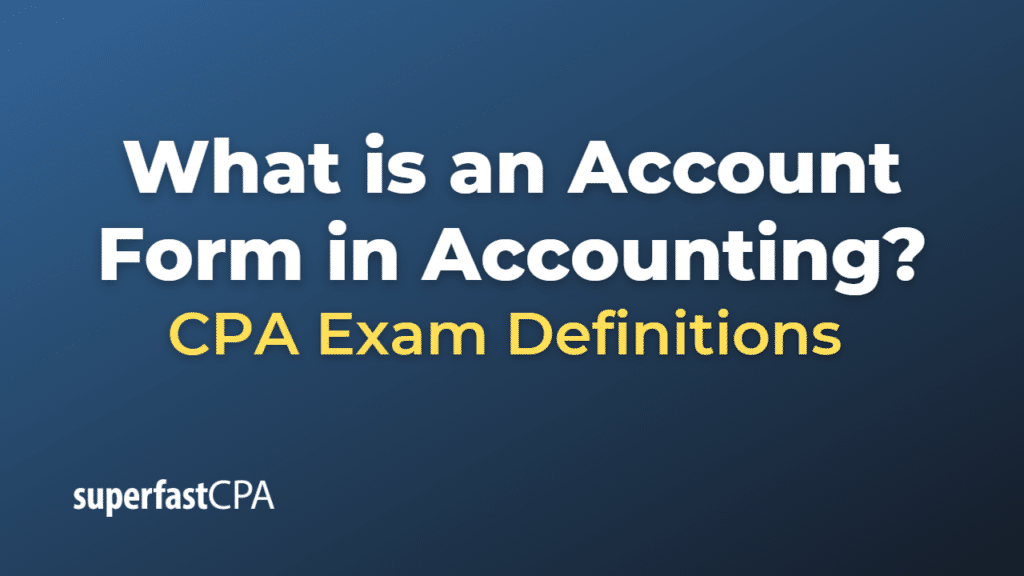Account Form in Accounting
In accounting, the term “account form” typically refers to the way financial information is presented in the balance sheet. The account form balance sheet displays assets on the left side and liabilities and equity on the right side, resembling the format of a T-account. This presentation visually shows the accounting equation (Assets = Liabilities + Equity) and makes it easy to compare the company’s assets with its liabilities and equity.
The account form balance sheet is structured as follows:
Left Side (Assets):
- Current Assets: Cash, accounts receivable, inventory, and other short-term assets.
- Non-Current Assets: Long-term investments, property, plant, and equipment, intangible assets, and other long-term assets.
Right Side (Liabilities and Equity):
- Current Liabilities: Accounts payable, short-term loans, and other short-term obligations.
- Non-Current Liabilities: Long-term loans, bonds payable, and other long-term obligations.
- Equity: Common stock, additional paid-in capital, retained earnings, and other equity accounts.
The account form balance sheet presents a clear snapshot of a company’s financial position at a specific point in time. This form is commonly used for internal reporting and is preferred by some businesses because of its simplicity and ease of interpretation. However, an alternative presentation format, called the report form, is more commonly used in practice, especially for external reporting. In the report form balance sheet, assets are listed at the top, followed by liabilities and then equity, presented vertically.
Example of an Account Form
Let’s consider a simple example of a balance sheet for a small business, “PQR Retail,” using the account form presentation.
PQR Retail Balance Sheet (Account Form) As of December 31, 2023
| Current Assets | Current Liabilities | ||
| Cash | $12,000 | Accounts Payable | $5,000 |
| Accounts Rec | $8,000 | Salaries Payable | $2,000 |
| Inventory | $6,000 | Interest Payable | $1,000 |
| Total Current Assets | $26,000 | Total Current Liabilities | $8,000 |
| Non-Current Assets: | Non-Current Liabilities: | ||
| Property, Plant, and Equipment | $20,000 | Long-term Loan | $12,000 |
| Long-term Investments | $4,000 | ||
| Total Non-Current Assets | $24,000 | Total Non-Current Liabilities | $12,000 |
| Total Assets | $50,000 | Total Liabilities | $20,000 |
| Equity: | |||
| Common Stock | $20,000 | ||
| Retained Earnings | $10,000 | ||
| Total Equity | $30,000 | ||
| Total Liabilities and Equity | $50,000 | ||
In this example, the account form balance sheet for PQR Retail shows assets on the left side and liabilities and equity on the right side. The balance sheet is structured to visually display the accounting equation (Assets = Liabilities + Equity), with total assets of $95,000 equal to the combined total of liabilities ($35,000) and equity ($65,000). The account form presentation allows users to easily compare the company’s assets with its liabilities and equity, providing a clear snapshot of PQR Retail’s financial position as of December 31, 2023.













